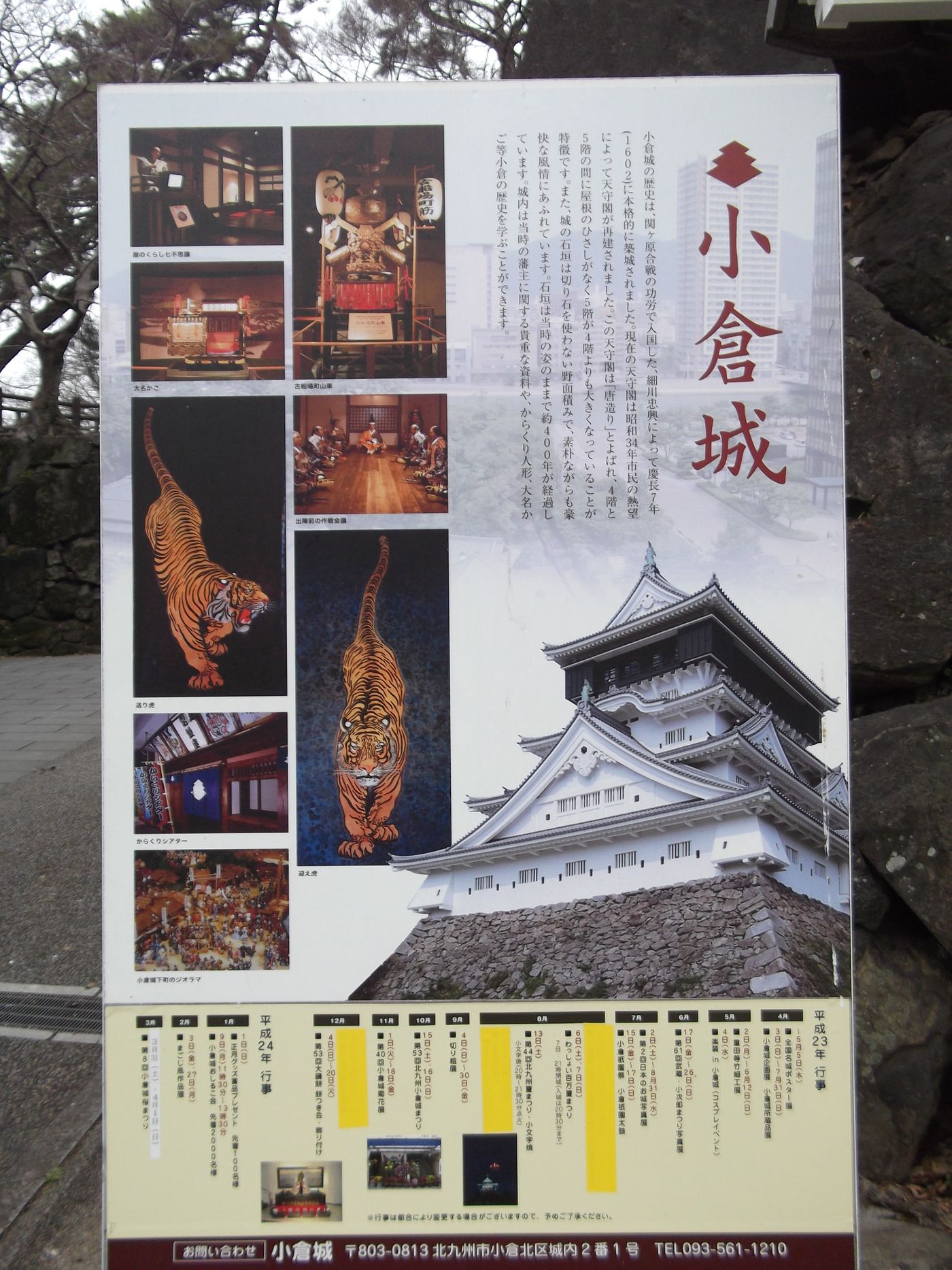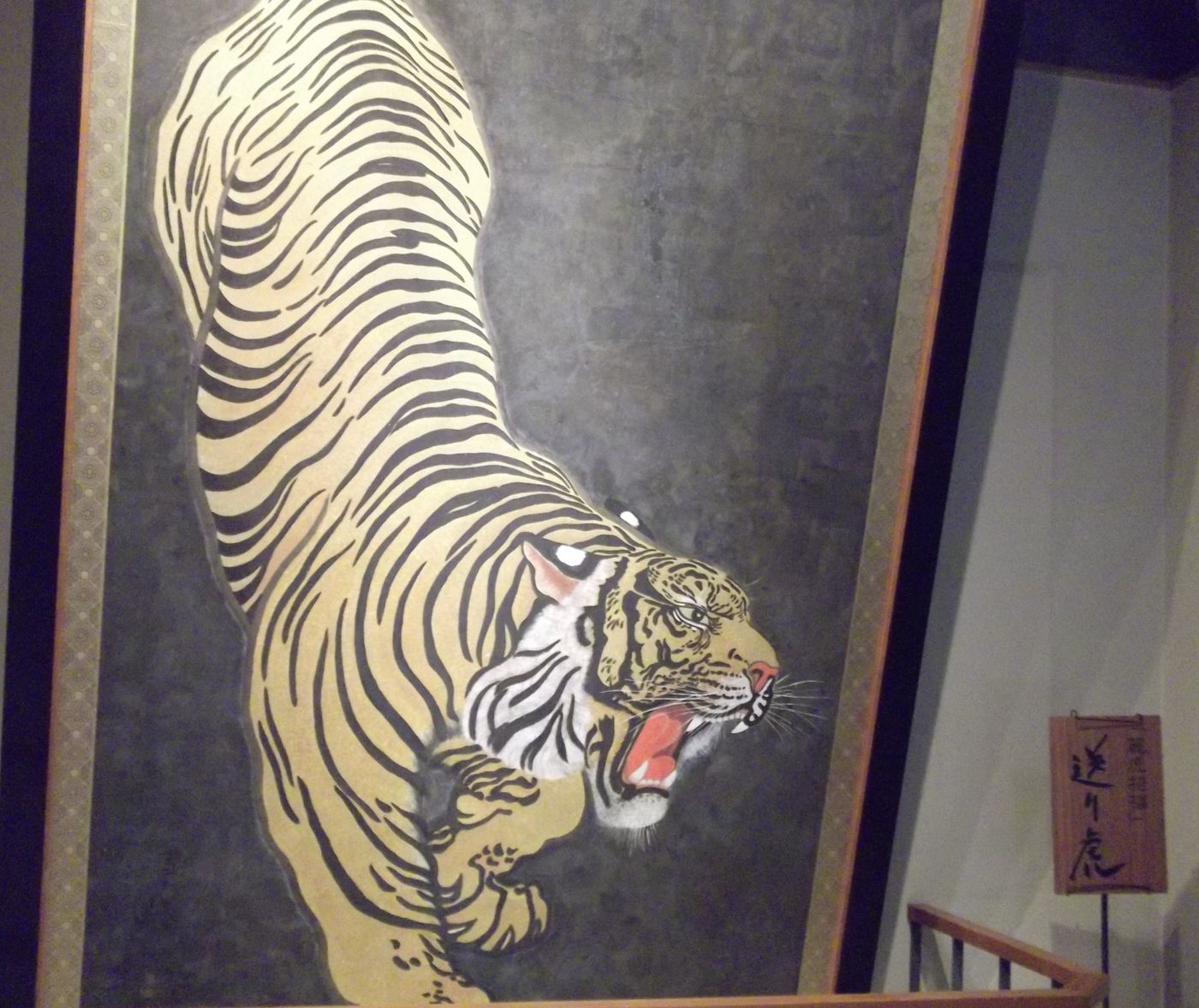Ogura. One castle and two tigers.

In the winter of 2012, after a night of drifting to the south of the Seto Inland, the next day when it was still dark, I was taken to Kokura by the ferry's shuttle bus. Start a multi-day trip to Kyushu from Kokura.
On the first day of landing in Kyushu, I emptied the closed Ogai former residence, followed Hepingtong, turned into the largest road in the city, and walked to another destination: the Kokura Castle Museum.
The mascot of Omi Hikone Castle is called "Hikone Meow" (ひこにゃん); it is also a cat family, and the mascot of Kokura Castle is a Q-version tiger called "とらっちゃ".
On the day of climbing the city, I didn’t meet とらっちゃ by chance. However, when I walked into the Tianshou Pavilion, one of the highlights of the museum’s display was also a tiger, two tigers, a tiger that could not run fast. On the way to Japan, it is normal to encounter cats and dogs, but it is a rare opportunity to encounter tigers, especially when visiting the Tianshou Pavilion, and tigers are sent to us.

Kokura Castle was successively owned by the Hosokawa family and the Ogasawara family after the Sekihara War. In the middle and late period of the Tokugawa shogunate, due to human negligence, the battle against the "Second Changshu Crusade" resulted in the destruction of the castle tower. As a shogunate camp, the Kokura clan, which joined the expedition against the Changzhou clan, broke out in the "Okura War" with Changzhou in 1866, which happened to be the year of the tiger.
It was not until 1959, that is, after World War II, that Kokura Castle was rebuilt according to the regulations of the Hosokawa clan when it was built. In 1961, the famous tiger painter Sato Takagoshi, with the support of millions of funds, took more than two years to paint the murals of "Welcome the Tiger" and "Send the Tiger". A commemorative symbol of the Year of the Tiger Burning Lost.

Not far from the entrance of the castle tower, the first thing you see is a male tiger, which is "Yellow Tiger", which is based on the meaning of "a beautiful tiger attracts blessings, and thousands of guests come", which symbolizes that the Kokura Castle Museum is attracting a steady stream of visitors. . The eyes of "Yinghu" are the biggest highlight. From the traveler's point of view, you will feel that no matter how you move, you can't escape the tiger's gaze, as if saying to every tourist:
When you buy a ticket and come in, give me a good tour, don't take a look at it casually!
If you are tired from the journey and your spirit is dazzled, you may feel the slight movement of the tiger's whiskers while viewing the painting. As for the exit on the way to visit, you will see a tigress's "send り tiger". Although "Send り Tiger" doesn't have the wide-angle eye-catching tiger vision of "Welcoming え Tiger", but when you look at the painting at close range, you can still feel the vividness of the painter's ink and eyes.

Kokura Castle, which was burnt down by fire and war in the 19th century, was rebuilt after World War II under the expectations of all walks of life. It was not set to reproduce the war scene at the end of the Tokugawa period, but transformed into an important landmark for tourism, cultural resources and the city. For Kokura Castle, the tiger is a symbol of peace, which means that it is good luck not to repeat the mistakes of war.
- Appreciate Citizen 2.0 Subscription Sponsorship: https://liker.land/cathytsai/civic
- A Buddhist fan who doesn't work hard on Facebook: " Those things travel history taught me "
- You'll see me here too:Checkered VOCUS | Medium | BBS MARKET
- If you want to cooperate, you can come to me here: misiaa2001@gmail.com
- Welcome to my sharing referral link: MAX Exchange (recommendation code ff893e34) | Noise.cash
Like my work? Don't forget to support and clap, let me know that you are with me on the road of creation. Keep this enthusiasm together!


- Author
- More